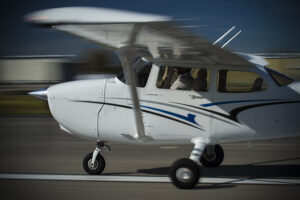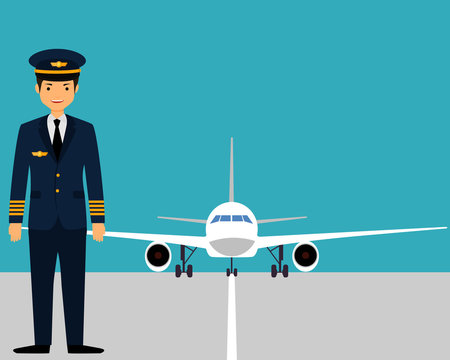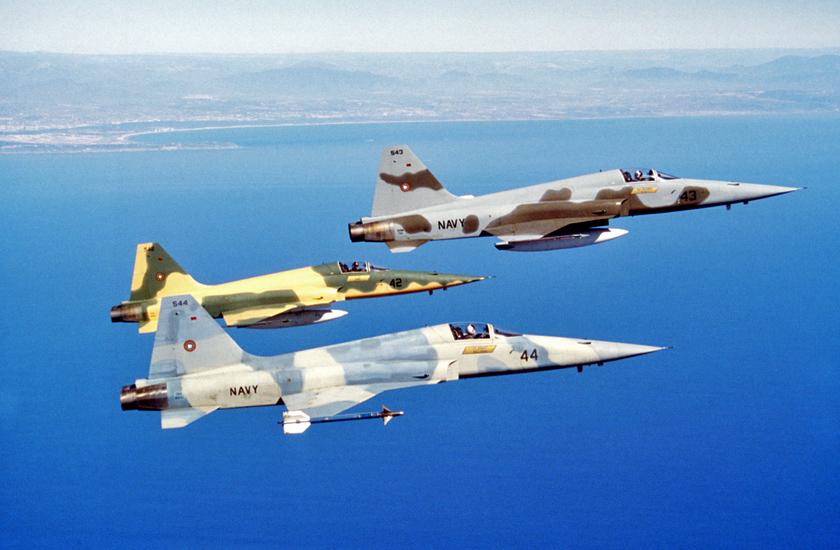F-1 & M-1 Visa for International Students Pilot Training
Interested in training to become a pilot in the United States? International students who want to attend flight school in the U.S. must apply for either a F-1 or M-1 Visa. These nonimmigrant visas allow you to obtain your pilot license in the U.S. through PEA’s flight training programs. PEA is one of the only four flight schools in the United States able to offer the F1 student visa thanks to its accreditation.
What Is an F-1 Visa?
 An F-1 visa allows international students to enter the U.S. to study at an accredited educational institution, such as a college or university, or English language program. This non-immigrant visa is issued by the U.S. Embassy or Consulate outside the U.S.
An F-1 visa allows international students to enter the U.S. to study at an accredited educational institution, such as a college or university, or English language program. This non-immigrant visa is issued by the U.S. Embassy or Consulate outside the U.S.
Private and on an F-1 visa, students have a one-year work authorization. This allows international students to work up to 12 calendar months following their training through one of PEA’s Professional Programs. This visa is ideal for students who want to build their flight hours to meet employer minimum requirements and have the possibility to work for a U.S. airline.
PEA is one of only four accredited flight schools in the U.S. certified by the Student Exchange and Visitor Program (SEVP). This means that students coming to the U.S. for academic studies can obtain an F-1 visa.
Application Process for the F-1 Visa
The I20 form is sent by PEA after the admission process is complete and is needed in order to apply for the F1 student visa.
There are several steps to applying for a visa through a U.S. embassy or consulate:
- Complete the online Nonimmigrant visa application using Form DS-160. This also requires uploading a photo.
- Schedule a visa interview in the U.S. Embassy or Consulate in your country of residence.
- Pay the visa application fee of $185.
- Ensure you have your passport, your DS-160 Form, application fee payment receipt, photo, and your I-20 form with you when you go to your interview.
What Is an M-1 Visa?
An M-1 visa allows international students to study in the United States. Unlike the F-1 visa, the M-1 visa is for academic purposes only, meaning that it does not authorize them to work in the U.S.
Students with an M-1 visa can learn to become a pilot through any of PEA’s flight training courses.
Application Process for the M-1 Visa
International students applying for an M-1 visa will undergo a similar application process to the F-1 visa students. The M-1 visa is valid for students attending a “vocational or other recognized nonacademic institution, other than a language training program”. This is specified on the I-20 form.
The process for applying to enter the U.S. is the same as the F-1 visa. It requires an interview and application through the U.S. Embassy or Consulate in your country of residence.
Continuing Students
Continuing students on an M-1 or F-1 visa must be currently enrolled at an SEVP-approved institution. These international students are allowed to enter the U.S. any time before classes begin. Visas for continuing students may be issued at any time, as opposed to new students, who can have their visa issued up to 365 days before the start date of their educational program.
Benefits of Flight Training In the U.S.
The U.S. offers globally recognized, high-quality flight training using advanced equipment. It is one of the top countries in the world to become a pilot. Flight training in the United States also allows international students to improve their proficiency in the English language, one of the most commonly spoken languages in the world.
Due to the FAA’s rigorous commercial pilot curriculum, students who earn their licenses in the U.S. can easily convert them in many other countries. In addition, student pilots through PEA have the opportunity to train to become a pilot using the United States’ advanced aviation tech, giving graduates a modern edge.
What to Do If Visa Is Denied
There are many reasons why an M-1 or F-1 visa could be denied. Ensure that you have additional documentation to help clarify any issues on your previous application when you reapply. There is no appeal process for these visas, but there is the opportunity to reapply and try again. On the next application, make sure you have a full understanding of the reason for the first denial to avoid a rejection on your second visa application.
How Soon Should I Apply for a Visa?
Give yourself plenty of time before flight training begins to obtain your visa. F-1 visas can be obtained up to 120 days before your flight training program begins. M-1 visas can be obtained up to 365 days before your flight training program begins.
To avoid risk of denial and having to reapply, it is best to apply as soon as you can within the allowed time frame. Studying abroad can be a lot to prepare for. Receiving approval on your visa early gives you more time to focus on things like housing and finances. Early approval can reduce your stress on the adjustment to studying in a new country, giving you plenty of energy to focus on your studies when you get there.




